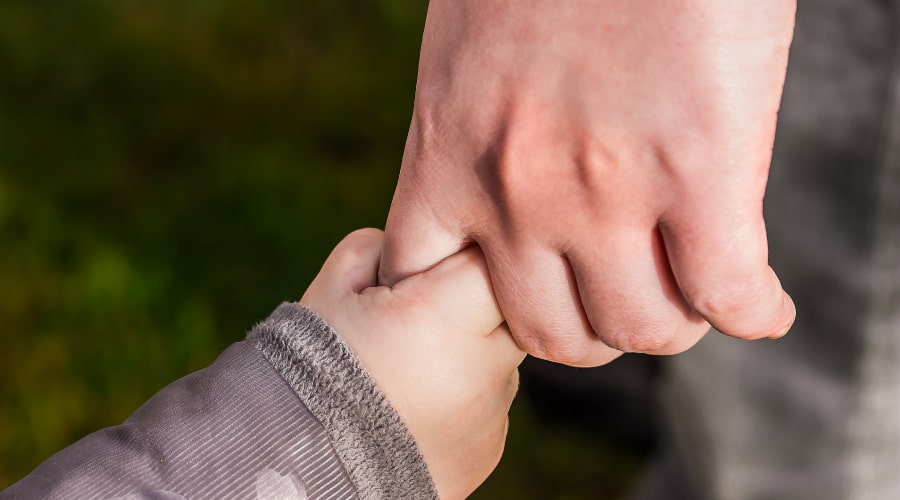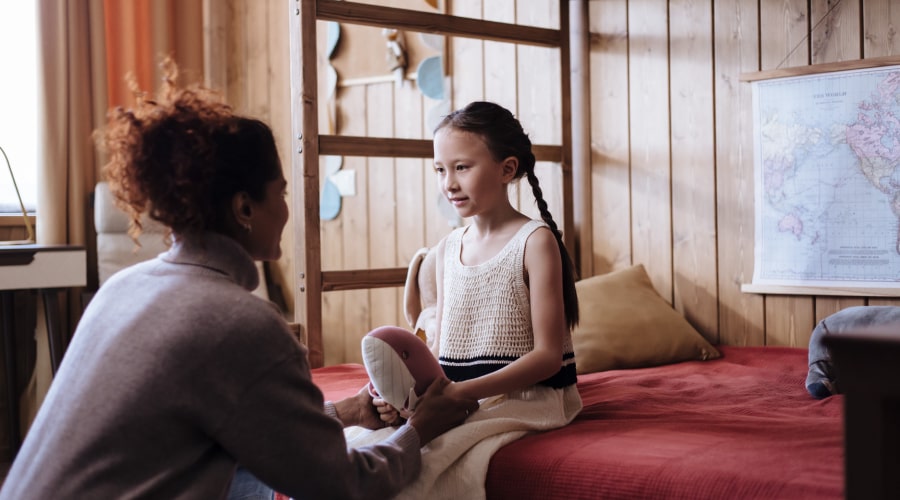settings
children
With Famly since
As I was thinking about writing this piece on talking to young children about death and grief, two recent events sprung to mind.
Shortly after the Queen’s funeral, I read a series of comments on a social media platform about expressing grief. The writer’s overriding message was that the Royal family presented an unhealthy reserve, dutifully going through rites and rituals. The writer regarded this as completely unhelpful for young children: not the right way to mourn.
In contrast, I heard Doreen Lawrence OBE, mother of Stephen who was killed in a race attack in 1993, speaking on the radio. Her strong message was that there is no single way to express loss and grief: the process is specific to the individual.
As an educator and psychoanalyst, I find it concerning to hear EYFS educators subscribing to a notion of a right and wrong way to grieve. Surely, this denies the subjectivity and agency of the individual. Doreen Lawrence’s words imply the contrary.
Managing emotions, often referred to as self-regulation, is a key aspect of working with young children. Fundamentally, it is about supporting children with their emotional state, finding ways that work for them.
Death and dying is an aspect of life that causes a range of emotional responses. How might practice in the early years help children to find ways of mediating and managing the raw emotions of loss and grief?

Talking with children about their emotional states
Carers of babies and young children, often unwittingly, help them get to know their emotions by offering them words. With young babies, we might say, “You’re upset aren’t you - maybe you’re hungry or need a drink?” or “It looks like you’re feeling unsettled, shall we go outside and feel the fresh air?”
Words can interrupt the intensity of feeling and support the child in beginning to understand what might be going on for them.
Talking about death and grief
Child Bereavement UK state, ‘Most grieving children do not need a ‘bereavement expert’, they need people who care. Early years settings, just by carrying on with their usual day-to-day activities while being aware of the bereavement, can do a huge amount to support a grieving child.’
While this is reassuring to know, talking to young children about death can prove difficult for many practitioners. Death and loss raise all sorts of personal reactions, whether consciously or not. Even the most experienced practitioners can find it hard to proceed or know where to begin. Though children might not need specialist help, practitioners and families may well do.
Accessing guidance from organisations that are experts in the field seems a fine place to start.
Getting support and guidance
I spoke with Tracey Boseley, Head of Development: Education, Child Bereavement UK.
Tracey outlines the main things to bear in mind when speaking with young children:
- Use simple, age-appropriate language
“Phrases such as ‘gone to sleep’ or ‘passed away’ and words such as ‘gone’ or ‘lost’ may feel kinder, but they are misleading and can lead to confusion.” Tracey explains “For instance, we encourage children to find things that they have lost, so they may continue to look for the person who has died. Similarly, using the phrase ‘gone to sleep’ may lead them to associate going to sleep with dying. This can result in bedtime anxieties”.
- Answer questions openly and honestly
Tracey emphasises the importance of answering questions honestly, keeping explanations short and clear. She adds, “It is OK to say you don’t know the answer to a question, but that you will come back to them if you find an answer”.
- Don’t avoid the truth
“Although it can feel daunting, it is important to answer any questions as honestly and fully as possible.” says Tracey. “It might be tempting to try and distract children, but this may cause them to become more anxious than hearing the truth.”
Tracey went on to say that it can help to explain that all living things die – it is part of the cycle of life. As living things, people will also die. It might help to talk about most people being very old when they die, but that younger people may die if they have an illness or injuries that cannot be cured.
- Expect difficult feelings and encourage questions
“Talking about death can elicit emotional reactions for us all,” explains Tracey, “This can feel difficult but acknowledging it and talking openly about death and grief, can help children to trust the adults around them. It also encourages them to ask questions, share worries and express their feelings”.
- Share feelings
“Children learn from adults around them, so if you experience an emotional reaction, it is best to acknowledge your feelings while reassuring them that you will be OK in a moment”, says Tracey. This will help them know that it’s OK to express their own feelings.
Child Bereavement UK has an excellent website providing thorough support and guidance for the Under 5s, and all ages.
This includes details about:
- supporting a bereaved child in an EYFS setting
- supporting the family
- supporting yourself
- developing a bereavement policy
- staff training
- books and resources
They also give detailed information to how to talk to very young children about death and dying.
This website provides support and guidance for a range of possible scenarios including bereaved children; telling a child someone has died; the death of a child; sudden death in the family or community; and resources translated into Ukrainian.

Death and grief as part of the daily curriculum.
As well as in the face of a death, it is beneficial to approach the theme of death as part of the general curriculum.
Children can be matter-of-fact about the topic, and it is important to encourage this. It may help them when they encounter a significant death. I remember a child asking, “Who will carry my box when I die?” Her frankness is applaudable, albeit tricky to reply to!
Sarah Porter, Headteacher of Kay Rowe Nursery School and Children’s Centre In the London Borough of Newham, spoke to me about a natural conversation that occurred about death.
“Last summer a starling flew into a glass door in the nursery and died instantly. The site supervisor picked it up and asked us if the children would like to see it. The children were engrossed by this beautiful bird, asking lots of questions. For example, they asked if the bird could still see and fly.”
Sarah comments, “Children are often reflective about death, wanting to understand what has happened.” She adds, “We always let families know if we have such discussions in case the children have questions they want to pursue at home.
Non-humans living creatures are useful when exploring questions of life and death - they are one step removed, yet relatable.
Finally
How death and grief affect us depends on who we are, along with our individual complexities. Death is an integral part of every life, so it is important that we broach the topic with young children. This may help them, over time, to find ways of thinking about, understanding and finding a way with death. Whether this will mean prioritising rites and rituals will very much depend on the individual. Who are we to say?

Further information
Child Bereavement UK’s Helpline: 0800 02 888 40
The Anna Freud centre: www.annafreud.org/early-years/early-years-in-mind/resources/supporting-young-children-and-families-through-bereavement
Suggested books:
- I Miss You: A First Look at Death by Pat Thomas
- Missing Mummy by Rebecca Cobb
- When Dinosaurs Die: A Guide to Understanding Death by Laurene Krasny Brown and Marc Brown
- What does dead mean? A book for young children to help explain death and dying by Caroline Jay and Jenni Thomas
- Is Daddy coming back in a minute? by Elke Barber and Alex Barber
- What happened to Daddy’s body? by Elke Barber and Alex Barber
- Goodbye Mousie by Robbie H. Harris
- Suzie goes to a funeral by Charlotte Olson
The big ideas
Top tips from Alphabet House
Get top tips from a setting just like yours. Hear from Alphabet House on why and how they use Famly - and why they’ve never looked back.
Read their story










